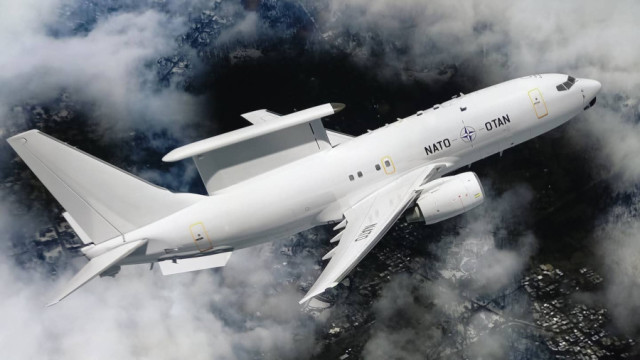On November 15, 2023, the North Atlantic Treaty Organization (NATO) announced that it had selected a new generation Boeing E-7A Wedgetail long-range radar detection and control aircraft to replace the existing fleet of Boeing E-3A AWACS and NATO control aircraft. It is stated that it is planned to purchase six new E-7A Wedgetail aircraft, the production of which by Boeing Corporation should be started in the coming years, and the first aircraft will be ready to start operational duty by 2031. Earlier this month, a consortium of NATO member states approved this project, which provides for one of the largest NATO purchases, the cost of which, however, has not been officially disclosed.

Boeing E-7A Wedgetail long-range radar detection and control aircraft in NATO (c) Boeing paint
Currently, the NATO Airborne Early Warning and Control Force (NATO Airborne Early Warning and Control Force - E-3A Component), based at the German Geilenkirchen Airbase, has 14 Boeing E-3A Sentry (AWACS) aircraft in service, out of 18 received in the early 1980s. The service life of these aircraft expires in 2035, when they should be replaced by the E-7A. The purchase of six E-7A aircraft is considered as the minimum replacement in terms of the number of boards, and, according to a number of specialized publications, the number of purchased E-7A aircraft can be increased.
At the end of 2022, the NATO Procurement Agency (NSPA) published a request for information on the successor to the NATO AWACS system. Having studied the submitted proposals, the NSPA stated that the E-7 is "the only known military ready-made system that does not require development," capable of meeting NATO requirements and which can be delivered within the required time frame. In fact, NATO's choice of the E-7 aircraft was predetermined after the US Air Force's decision in February 2023 to purchase E-7 aircraft to replace the existing fleet of E-7 aircraft. Serial deliveries of 26 E-7A aircraft to the US Air Force are planned from 2027 to 2031, and thus deliveries of E-7 to NATO will be conducted according to completion of their receipt by the US Air Force.
Recall that the E-7 AWACS and control aircraft (Boeing 737 AEW&C, Australian name Wedgetail) was originally developed by Boeing under a 1999 contract for the Australian Air Force, and the Australian industry is a supplier of a number of its subsystems. The aircraft is based on the Boeing 737 NG passenger liner (in the Boeing 737-700ER modification) and is equipped with a Northrop Grumman Multi-role Electronically Scanned Array (MESA) radar system with AFAR in a fixed elongated fuselage fairing. The Australian Air Force received six E-7 aircraft in 2009-2012 (in fact, the aircraft were built by 2006, but their fine-tuning was significantly delayed) and declared them to have reached full combat readiness in May 2015.
In addition, to date, Boeing 737 AEW&C (E-7) aircraft have also been acquired by Turkey (received four aircraft in 2008, finally putting them into operation in 2014, designation E-7T Peace Eagle) and South Korea (four aircraft in 2012). In 2019, the UK signed a contract for the purchase of five E-7 aircraft (British designation Wedgetail AEW.1) also to replace the E-3D aircraft in the British Air Force. Subsequently, the British side reduced the order for the E-7 to three aircraft, however, according to recent reports, it plans to restore it to five units. The first E-7 aircraft is due to join the British Air Force in 2023. In 2014, Qatar also signed an agreement on the acquisition of three Boeing 737 AEW&C aircraft, but it was not developed.
